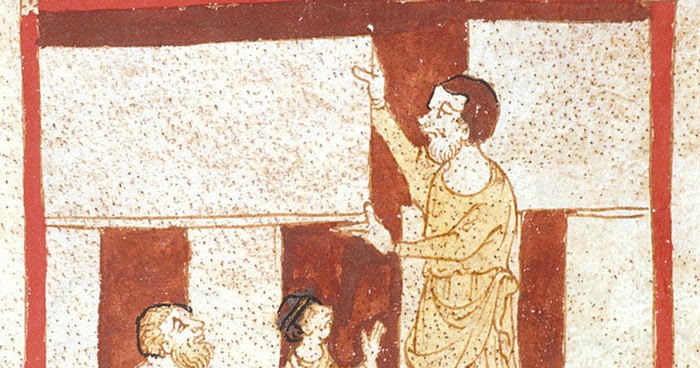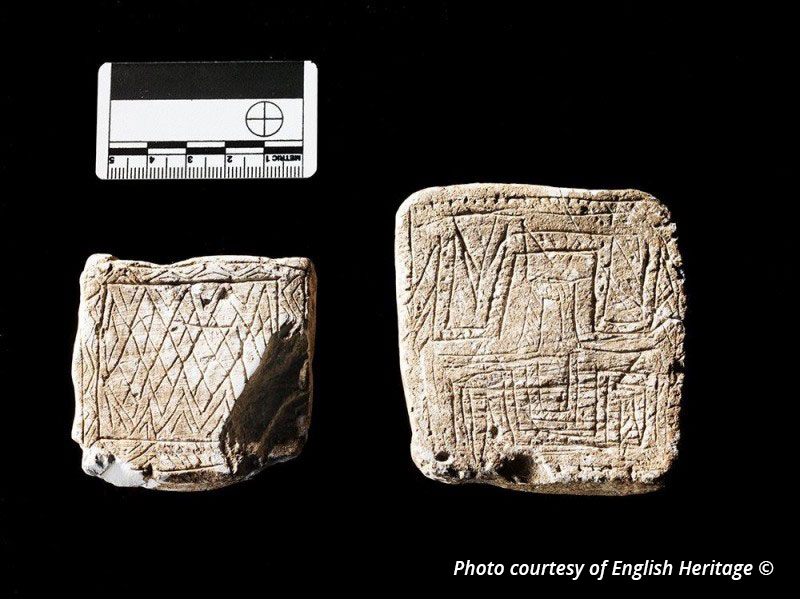
Image courtesy of The Independent
Ancient image depicting how Merlin summoned Giants to build Stonehenge

Image courtesy of The Independent
Ancient image depicting how Merlin summoned Giants to build
Stonehenge
The Merlin
Theory
Early theorists were influenced heavily by supernatural tales. The
Merlin theory states that Merlin had a giant build the structure
for him or that he had magically transported it from Mount
Killaraus in Ireland.Geoffrey of Monmouth was the first to record
writings about Stonehenge being associated with Merlin. According
to Geoffrey's Historia Regum Britanniae, when Merlin was asked the
best place for royalities to be buried, Merlin advised King
Aurelius Ambrosius to collect stones from Mount Killarus in
Ireland. Merlin instructed the King's army to build Stonehenge
after transporting the stones via ships. While it is very
amusing, this theory is impossible because of course, magic does
not exist, and radiocarbon dating tells archaeologists that
Stonehenge was built between 2400 to 2200 BCE.
The Music
Theory
Another very odd theory was that Stonehenge is a gigantic
xylophone. Researchers from the Royal College of Art discovered
that when the stones were struck, they produced musical tones.This
could explain why the stones were arranged in a circle-it's so the
sounds could resonate. The bluestones 'sang' when they were hit,
compared to other stones that gave a mere thud.
The Alien
Theory
This theory is definitely far-fetched. There are people that
propose that Stonehenge was built as a sort of landing pad for
extraterrestrials. Yet others say that Stonehenge was built with
the help of aliens with their superior knowledge of science and
engineering. Even wilder: it's said that Stonehenge is a sound
resonator; when the right sounds are played at the right
frequency, it is supposed to have an effect that opens a portal to
a different dimension or alien base.
Mysterious Stonehenge Chalk
Plaques
The two chalk plaques were discovered in the 1960s by Major
H.M. and Mrs. F. De M. Vatcher. They were found during the
widening and lowering of the road near Stonehenge and were found
near the base of a pit. Other findings near the plaques were an
antler pick and various animal bones. A number of used chalk lumps
were also found. Archaeologists are not sure what those were used
for or if the presence of the two chalk plaques in the pit mark a
special commemoration. Additionally, the etching of the plaques
resemble the decoration found on some Grooved Ware pottery.

Courtesy of the English Heritage Visitor Centre
In the image above, are two plaques that
were found with pieces of chalk, animal bones, pieces of Grooved
Ware and an antler pick. These unique plaques don't have a
determined purpose set for them.
Courtesy of Beaker Folk Bronze Age Pottery
Grooved Ware was the earliest
functional pottery that was manufactured in England. There were
many found in Durrington Walls, where many feasts took place.
Bonus Theory:
photo courtesy of the Independent
LINKS
Ctrl+Mouse Click to open in new tab or right click open tab





